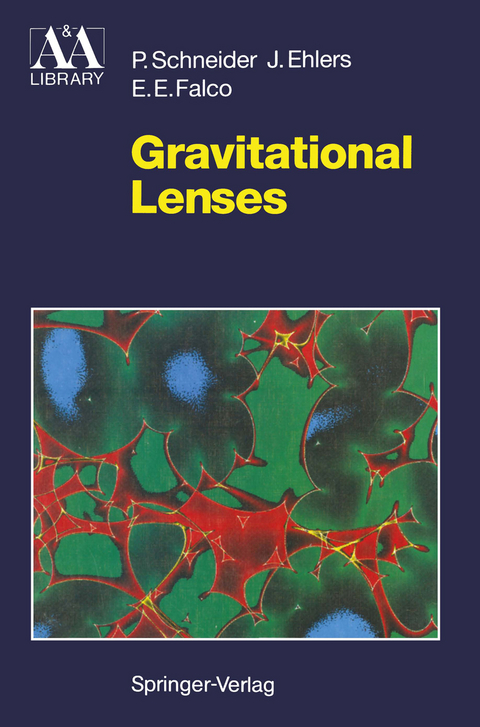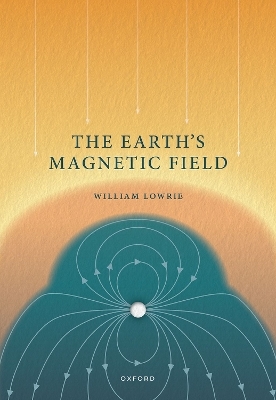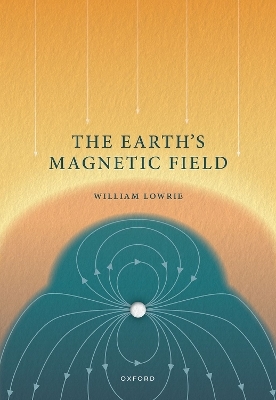
Gravitational Lenses
Springer-Verlag New York Inc.
978-1-4612-7655-5 (ISBN)
1. Introduction.- 1.1 Historical remarks.- 1.2 Outline of the book.- 1.3 Remarks about notation.- 2. Basic facts and the observational situation.- 2.1 The Schwarzschild lens.- 2.2 The general lens.- 2.3 The magnification factor.- 2.4 Observing gravitational lens systems.- 2.5 Known gravitational lens systems.- 3. Optics in curved spacetime.- 3.1 The vacuum Maxwell equations.- 3.2 Locally approximately plane waves.- 3.3 Fermat’s principle.- 3.4 Geometry of ray bundles.- 3.5 Distances based on light rays. Caustics.- 3.6 Luminosity, flux and intensity.- 4. Derivation of the lens equation.- 4.1 Einstein’s gravitational field equation.- 4.2 Approximate metrics of isolated, slowly moving, non-compact matter distributions.- 4.3 Light deflection by quasistationary, isolated mass distributions.- 4.4 Summary of Friedmann-Lemaître cosmological models.- 4.5 Light propagation and redshift-distance relations in homogeneous and inhomogeneous model universes.- 4.6 The lens mapping in cosmology.- 4.7 Wave optics in lens theory.- 5. Properties of the lens mapping.- 5.1 Basic equations of the lens theory.- 5.2 Magnification and critical curves.- 5.3 Time delay and Fermat’s principle.- 5.4 Two general theorems about gravitational lensing.- 5.5 The topography of time delay (Fermat) surfaces.- 6. Lensing near critical points.- 6.1 The lens mapping near ordinary images.- 6.2 Stable singularities of lens mappings.- 6.3 Stable singularities of one-parameter families of lens mappings; metamorphoses.- 6.4 Magnification of extended sources near folds.- 7. Wave optics in gravitational lensing.- 7.1 Preliminaries; magnification of ordinary images.- 7.2 Magnification near isolated caustic points.- 7.3 Magnification near fold catastrophes.- 8. Simple lens models.- 8.1 Axially symmetric lenses.-8.2 Lenses with perturbed symmetry (Quadrupole lenses).- 8.3 The two point-mass lens.- 8.4 Lenses with elliptical symmetry.- 8.5 Marginal lenses.- 8.6 Generic properties of “elliptical lenses”.- 9. Multiple light deflection.- 9.1 The multiple lens-plane theory.- 9.2 Time delay and Fermat’s principle.- 9.3 The generalized quadrupole lens.- 10. Numerical methods.- 10.1 Roots of one-dimensional equations.- 10.2 Images of extended sources.- 10.3 Interactive methods for model fitting.- 10.4 Grid search methods.- 10.5 Transport of images.- 10.6 Ray shooting.- 10.7 Constructing lens and source models from resolved images.- 11. Statistical gravitational lensing: General considerations.- 11.1 Cross-sections.- 11.2 The random star field.- 11.3 Probabilities in a clumpy universe.- 11.4 Light propagation in inhomogeneous universes.- 11.5 Maximum probabilities.- 12. Statistical gravitational lensing: Applications.- 12.1 Amplification bias and the luminosity function of QSOs.- 12.2 Statistics of multiply imaged sources.- 12.3 QSO-galaxy associations.- 12.4 Microlensing: Astrophysical discussion.- 12.5 The amplification bias: Detailed discussion.- 12.6 Distortion of images.- 12.7 Lensing of supernovae.- 12.8 Further applications of statistical lensing.- 13. Gravitational lenses as astrophysical tools.- 13.1 Estimation of model parameters.- 13.2 Arcs in clusters of galaxies.- 13.3 Additional applications.- 13.4 Miscellaneous topics.- References.- Index of Individual Objects.
| Reihe/Serie | Astronomy and Astrophysics Library |
|---|---|
| Zusatzinfo | XIV, 560 p. |
| Verlagsort | New York, NY |
| Sprache | englisch |
| Maße | 155 x 235 mm |
| Themenwelt | Naturwissenschaften ► Geowissenschaften ► Geophysik |
| Naturwissenschaften ► Physik / Astronomie ► Astronomie / Astrophysik | |
| Naturwissenschaften ► Physik / Astronomie ► Relativitätstheorie | |
| Naturwissenschaften ► Physik / Astronomie ► Theoretische Physik | |
| Schlagworte | Extragalactic Cosmology • extragalaktische Kosmologie • geometrical optics • geometrische Optik • Gravitation • Gravitational Lensing • Gravitationslinsen • Quasare • quasars • Redshift • Rotverschiebung |
| ISBN-10 | 1-4612-7655-1 / 1461276551 |
| ISBN-13 | 978-1-4612-7655-5 / 9781461276555 |
| Zustand | Neuware |
| Haben Sie eine Frage zum Produkt? |
aus dem Bereich


